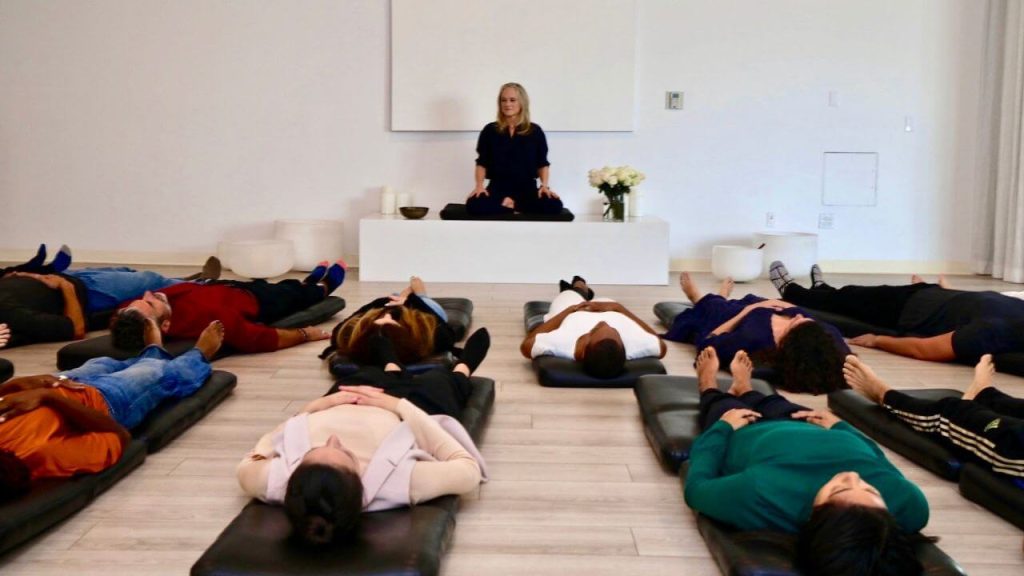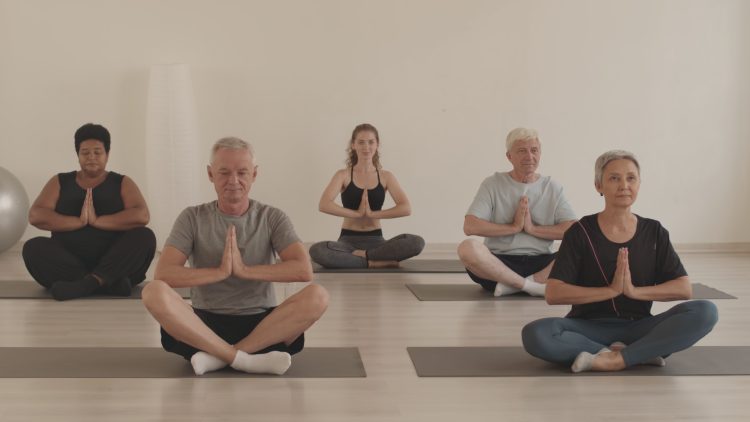In a world increasingly dominated by noise, pressure, and overstimulation, the ancient practice of meditation has experienced a powerful resurgence. From Silicon Valley boardrooms to rural temples and bustling urban centers, individuals are seeking refuge in stillness. But while meditation is often seen as a solitary act, community meditation groups—where people come together to meditate as one—are redefining how mindfulness can be practiced and shared. These collective experiences offer more than just personal relaxation; they build emotional resilience, forge human connections, and enhance overall wellbeing through shared intentionality. In this article, we explore the transformative power of community meditation groups, the psychological and physiological benefits of practicing mindfulness with others, and how these groups serve as a bridge between inner peace and social belonging.
The Rise of Group Meditation in Modern Society
The practice of meditation is thousands of years old, rooted in spiritual traditions such as Buddhism, Hinduism, Taoism, and other contemplative paths. However, modern secular adaptations have broadened its appeal. Mindfulness-Based Stress Reduction (MBSR), developed by Dr. Jon Kabat-Zinn, introduced meditation into healthcare settings. Apps like Headspace and Calm made it accessible to the masses. With this growing popularity came the rise of organized group meditation sessions in wellness centers, yoga studios, community halls, corporate offices, universities, and even prisons.
These gatherings often include guided meditations, silent sittings, breathing exercises, and group reflections. Formats may vary from formal Zen meditation (zazen) to relaxed mindfulness circles. What unites them is the central idea that mindfulness—paying attention to the present moment non-judgmentally—can be deepened when practiced with others.
Psychological Benefits of Group Meditation
1. Enhanced Commitment and Accountability:
One of the most common struggles for solo meditators is consistency. Life gets busy, distractions abound, and meditation often slips down the priority list. Group meditation sessions provide structure and routine, encouraging individuals to show up and stay committed. The shared intention to be present together creates a sense of mutual accountability, making the practice more sustainable.
2. Reduced Feelings of Isolation:
Meditation can be a deeply personal journey, yet many people find comfort in knowing others are on a similar path. Group meditation reduces the sense of emotional isolation by creating a safe, shared space for introspection. Especially for those experiencing stress, anxiety, or grief, being surrounded by others—even in silence—can be profoundly comforting.
3. Strengthened Emotional Regulation:
Research shows that meditation enhances emotional resilience by activating brain regions involved in empathy, self-awareness, and emotional regulation. Practicing in a group amplifies this effect. When individuals share energy, presence, and breath with others, it fosters a sense of empathy and collective emotional grounding. This can be particularly healing during times of personal or societal crisis.
4. Increased Mindfulness and Focus:
The group dynamic can help individuals deepen concentration. Shared stillness creates an atmosphere that is less prone to distractions. Whether it’s the sound of synchronized breathing or the focused energy in the room, many participants report that meditating in a group helps them enter a mindful state more quickly and stay present for longer periods.
Physiological Benefits of Collective Mindfulness
1. Lower Cortisol Levels:
Studies have found that meditation, even in short sessions, can lower cortisol, the body’s primary stress hormone. In a group setting, the calming environment may further enhance this response due to the phenomenon known as “social contagion”—where emotions and physiological states are influenced by those around us.
2. Improved Heart Rate Variability and Blood Pressure:
Regular meditation promotes cardiovascular health by improving heart rate variability and reducing blood pressure. Group sessions often include breathing synchrony, which has been shown to positively affect autonomic nervous system balance. This communal rhythm can help regulate physiological responses more effectively than solitary practice.
3. Enhanced Immune Response:
Mindfulness practices have been linked to increased immune function. A group meditation setting adds layers of emotional safety and interpersonal connection, which can positively impact the immune system by lowering stress-induced inflammation and promoting parasympathetic activity.
Social and Spiritual Dimensions
1. Shared Energy and Intention:
There is a palpable shift in energy when people come together to meditate. The Buddhist concept of “sangha” (spiritual community) speaks to this—suggesting that spiritual growth is nurtured not just through individual effort but through the collective field created by practitioners. This shared field can create a powerful sense of unity, even among strangers.
2. Sense of Belonging:
For many, community meditation groups serve as a lifeline in times of loneliness or transition. Whether someone is new to a city, dealing with personal loss, or searching for deeper meaning, these groups offer a nonjudgmental environment where presence is enough. There is no need for small talk, explanations, or status updates—just the mutual commitment to stillness and self-awareness.
3. Development of Compassion and Interconnectedness:
Meditation often increases compassion and loving-kindness. Group practices like Metta (loving-kindness meditation) are particularly powerful when done collectively. When individuals sit with the intention to send goodwill to others in the room and beyond, it reinforces a deep understanding of our shared humanity and interconnectedness.
Accessibility and Inclusivity of Community Meditation
One of the most beautiful aspects of community meditation is its simplicity and inclusiveness. No expensive gear, special skills, or prerequisites are required. A room, a cushion or chair, and a willingness to be present are all that’s needed. Many meditation groups are free or donation-based, making them accessible across socioeconomic boundaries.
Organizations like Insight Meditation Society, the Art of Living Foundation, and Mindful Schools have created frameworks for group meditation that emphasize diversity, cultural sensitivity, and trauma-informed practice. Additionally, digital platforms such as Insight Timer and Zoom have made it possible for people to join global group meditations from the comfort of home.

Tips for Joining or Creating a Community Meditation Group
1. Explore Local Resources:
Check out yoga studios, libraries, wellness centers, and community boards for open meditation sessions. Many spiritual centers offer weekly or monthly gatherings open to the public.
2. Try Virtual Groups:
If in-person groups aren’t available or preferred, virtual communities provide a rich alternative. Platforms like Meetup or Eventbrite list online meditation events, some guided by experienced teachers, others peer-led.
3. Start Small:
If you’re interested in creating a group, invite a few friends or colleagues to meet weekly for 10–20 minutes. Over time, the group can grow organically. Start with short guided meditations and allow time for sharing reflections afterward.
4. Choose an Inclusive Format:
Ensure that your meditation group is welcoming to all regardless of background, experience level, or belief system. Clarify the format and expectations upfront so everyone feels comfortable participating.
5. Incorporate Reflection and Sharing:
After the meditation, allow space for people to share their experience—without pressure. This can deepen the communal bond and provide insight into different emotional or spiritual journeys.
The Role of Facilitators and Teachers
While peer-led groups are effective and empowering, having a skilled facilitator or teacher can add depth and structure. A trained teacher can guide participants through different types of meditation (e.g., mindfulness of breath, body scan, loving-kindness), answer questions, and offer insights rooted in wisdom traditions and neuroscience.
Facilitators also help hold the space—ensuring it remains respectful, safe, and focused. In trauma-informed settings, teachers are trained to offer modifications and avoid techniques that may be triggering, ensuring a gentle and inclusive experience for all.
Transformational Stories from the Collective Space
Across the globe, people from all walks of life have discovered the power of meditating together. Veterans coping with PTSD, cancer patients managing chronic pain, college students facing anxiety, corporate teams battling burnout—all have found strength in sitting quietly with others. These stories highlight the universality of human suffering—and the universal potential for healing through mindfulness.
One woman shared that joining a women’s meditation circle after her divorce helped her regain her sense of identity and strength. A young man who lost his job during the pandemic found purpose again by leading a small meditation group in his neighborhood park. An elderly couple reported that community meditation gave them “something to look forward to” every week after moving into a retirement home.
These accounts underscore a simple but profound truth: healing happens not just within us, but between us.
Conclusion: Finding Stillness Together
In an era of digital distraction, political polarization, and social fragmentation, community meditation offers a powerful antidote. It allows us to press pause, not just for ourselves, but alongside others who are equally committed to finding calm, clarity, and connection. The power of collective mindfulness lies not in the elimination of chaos, but in learning to meet it—with presence, breath, and compassion—together.
Whether you’re a seasoned practitioner or a curious beginner, participating in group meditation can transform your relationship with yourself and the world around you. In the silence of shared presence, we find a deep and abiding reminder: we are not alone on this journey.

















































